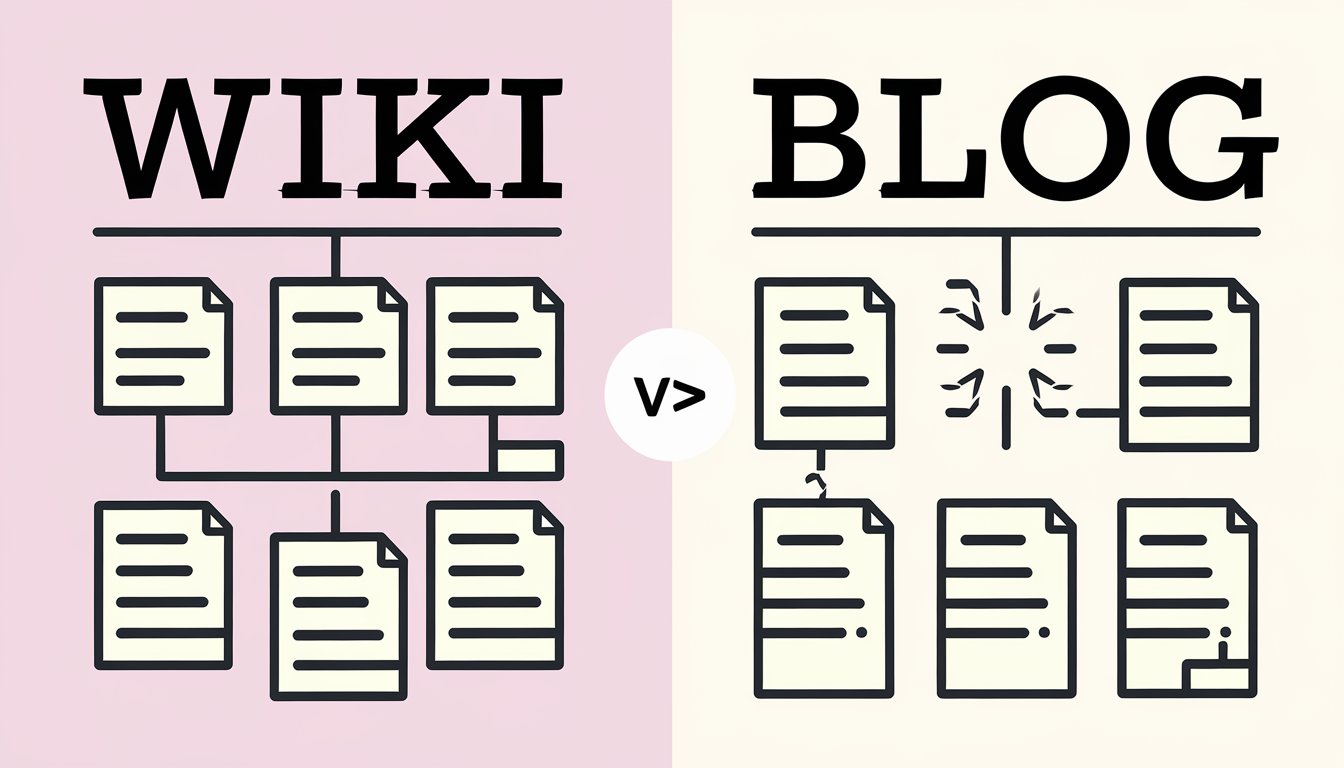How Many Blog Posts Before Launch – How To Attract Readers
Starting a blog is exciting but can feel overwhelming. You might wonder how many posts you need before launching. While there’s no one-size-fits-all answer, having a solid launch strategy is essential.
Pre-launch content is key to attracting readers from day one. With over 600 million blogs online, standing out means creating high-quality posts that solve niche-specific problems, building trust, and encouraging repeat visits.
Discover tips for planning blog posts and crafting a launch strategy to attract and retain readers.
The Importance of Pre-Launch Content
Pre-launch marketing is essential for building excitement and setting your blog up for success. By sharing engaging content before launching, you can attract readers, generate buzz, and establish your blog’s value right from the start.
It’s not just about getting attention — it’s about creating a foundation of interest and trust. Pre-launch content allows you to showcase your unique perspective, define your target audience, and gather valuable insights from early interactions.
A strong pre-launch strategy ensures your blog makes a memorable first impression. Whether through teasers, behind-the-scenes updates, or sneak peeks of upcoming posts. It helps your blog gain momentum even before day one.
Planning Your Blog Launch
A well-thought-out plan is the backbone of a successful blog launch. By setting clear goals, preparing strategic content, and organizing your workflow, you can create a smooth launch process that captivates your audience from the start. Here’s how you can start.
1. Set Goals for Your Blog Launch
First, figure out who your audience is. Who are you writing for? What do they like and need? Knowing this helps you make content that they’ll enjoy.
Then, decide what success looks like for your blog. This could be the number of visitors, email subscribers, or shares on social media. Having specific goals helps you see how you’re doing.
Make an editorial calendar to plan your content. It helps you schedule topics, set deadlines, and keep a regular posting schedule. Mix up your content to keep things interesting and fresh.
Be realistic about how long it takes to create and publish content. It’s better to have a few great posts than many bad ones.
Use project management tools to stay organized. They help you manage your work, meet deadlines, and work with your team. With clear goals, defined success metrics, and a good plan, you’re ready for a successful blog launch.

2. Decide on the Number of Blog Posts
Finding the ideal number of blog posts for your launch depends on your niche, goals, and posting frequency. While there’s no one-size-fits-all answer, it’s crucial to prioritize quality over quantity. A strong launch strategy involves having 5-10 well-written posts ready, giving readers a clear sense of your blog’s focus and value.
For beginners, aim to publish 6-8 posts a month to maintain consistency and keep your blog active. However, for blogs in complex or niche industries, 2-4 in-depth, detailed posts per month may be sufficient to meet your audience’s needs. Seasonal blogs, on the other hand, require extra planning to ensure timely content for holidays or industry-specific trends.
Updating existing content can also keep your blog fresh and relevant. Studies show that refreshing old posts can boost traffic by up to 106%. This makes it an effective strategy for maintaining growth over time.
Additionally, having a content buffer — extra posts prepared in advance can help you stick to a regular publishing schedule. It reduces stress and helps you stay consistent after your launch.
3. Create Your Blog Content Plan
A solid content plan is key to a successful blog launch. Start by setting up an editorial calendar to keep your publishing schedule on track. This tool helps you maintain consistency, which is crucial for building reader interest and boosting SEO rankings.
When developing your content strategy, aim to prepare enough posts for 2-4 months post-launch. This approach reduces the writing pressure after your blog goes live. Balance your topics to appeal to different audience segments, ensuring a mix that covers various aspects of your niche.
Content repurposing is a smart tactic to maximize your efforts. Take one piece of content and adapt it into multiple formats, such as infographics or videos. This strategy helps you reach a wider audience and reinforces your message across different platforms.
Use keyword research to guide your content planning. Address popular search queries in your niche to attract organic traffic. Remember, quality trumps quantity. Focus on creating valuable, well-researched posts that establish your authority and effectively engage readers.

4. Write High-Quality Blog Posts
To create a high-quality blog post, start with a catchy headline featuring your target keywords to grab attention and boost SEO. Quality outweighs quantity in blogging.
Make your content easy to read with short paragraphs and bullet points to improve structure and maintain reader interest. Add relevant images to enhance visual appeal.
Apply SEO best practices by using proper headers, meta descriptions, and internal links to help search engines understand your content. Tools like Grammarly can also improve your writing and catch errors.
Focus on creating valuable, informative content for your audience. Google rewards content that is expert, authoritative, and trustworthy. By following these tips, you’ll craft blog posts that engage readers and rank well in search results.

5. Promote Your Blog Before Launch
Get ready to make a splash with your blog! Start promoting it early to build excitement. Use social media to create buzz and attract readers. Share sneak peeks, behind-the-scenes looks, and teasers to spark interest.
Create eye-catching graphics and engaging posts that show your unique voice.
Don’t forget about email list building. Start collecting email addresses from interested readers before your launch. Offer a free resource or exclusive content in exchange for sign-ups. This gives you a direct line to communicate with your audience and keep them updated on your launch progress.
Consider influencer collaboration to expand your reach. Connect with established bloggers or experts in your niche. Ask them to share your upcoming launch with their followers or contribute a guest post to your blog. This can help you tap into their audience and build credibility right from the start.
Remember, quality trumps quantity in blog promotion. Focus on creating valuable, engaging content that resonates with your target audience. By laying this groundwork, you’ll set yourself up for a successful launch and long-term growth.

6. Engage With Early Readers
Starting a strong blog community means engaging early readers. Create a website for your new project before it launches. This lets you connect with your audience and share important content.
Offer a free chapter of your upcoming book on the blog. This can spark interest and encourage people to buy your book.
Guest blogging is a great way to build excitement for your launch. It introduces your work to new people and brings more visitors to your site. When you talk to readers, make sure to respond quickly to their comments and feedback.
This shows you value their opinions and encourages more interaction. Use what readers say to make your blog better. Their feedback can help make your blog more valuable and relevant.
7. Launch Your Blog Successfully
To maximize attention, choose a day when your audience is most active online, avoiding major holidays or industry events.
Before launching, do a detailed check to ensure your posts are polished, your site looks professional, and all functions work smoothly. This helps prevent last-minute issues that could disrupt your launch.
Maintain a regular posting schedule, with many bloggers aiming for one to two posts per week. This helps keep your content fresh, and your readers engaged.
Remember, a successful launch is just the beginning. Continuously refine your strategy based on reader feedback and analytics. Stick to your content plan and watch your blog thrive.
8. Measuring Your Pre-Launch Success
Tracking performance before launching your blog is essential. Use analytics tools to monitor visitor behavior, providing insights to refine your strategy for a stronger launch.
Pay close attention to website traffic and page views to gauge whether your content is attracting readers. Monitor social media engagement as well — it’s a highly effective way to increase visibility and offer a 95% ROI.
Keep track of sign-ups for your email list or waiting list. These numbers indicate how much interest your blog has generated and help build anticipation, ensuring a solid user base at launch.
Preparation significantly boosts your chances of success. Studies show that well-planned launches are 25 times more likely to succeed. Use these insights to fine-tune your blog’s value proposition and target audience, avoiding common pitfalls that lead to failure. By focusing on the right metrics, you’ll set the stage for a successful launch.
Post-Launch Strategies
After your blog goes live, the focus shifts to growth. Implementing effective strategies will help you attract and retain readers, optimize your content, and set your blog up for long-term success. Here’s how to keep the momentum going.
- Staggering Blog Posts: Release blog posts at regular intervals to maintain consistent content flow and improve search engine rankings.
- Creating Valuable Content: Ensure your content addresses your audience’s needs and adds value, which builds trust and encourages repeat visits.
- Using the SMART Framework for Goal Setting: Set Specific, Measurable, Achievable, Relevant, and Time-bound goals to guide your blog’s growth.
- Tracking Key Metrics: Monitor website traffic, social media engagement, and conversion rates to assess and refine your content strategy.
- Choosing the Right Niche: Focus on a specific niche that aligns with your expertise and audience interests. This will help you establish authority and attract more readers and opportunities.
From Launch Pad to Legacy: Building a Blog That Thrives
Launching your blog is no small feat — it’s the first step in sharing your unique voice with the world. By having high-quality posts ready from day one, you’re not just launching a blog. You’re creating a destination for readers to connect, learn, and keep coming back for more.
Think of your blog as a living, breathing entity. The more you nurture it with consistent, valuable content, the more it will grow and thrive. Every post you publish is an opportunity to showcase your expertise, build relationships, and strengthen your presence in your niche.
But here’s the thing — launching is just the beginning. The real magic happens on the road ahead.
Want to master audience engagement, nail your content strategy, and watch your blog skyrocket? You don’t have to go it alone. Head over to After Social for tailored tips and actionable insights that will keep your blog buzzing with success.
Your journey has just begun, and we’re here to make it unforgettable. Let’s grow together!





